
Manufacturer's Specifications
Enclosure Type: Vented.
Bass Damping: 4th-order Butterworth.
Drivers: 8-in. cone woofer, 10-in. passive radiator, 1-in. dome tweeter.
Impedance: 8 ohms.
Sensitivity: 89 dB/watt.
Frequency Response: 38 Hz to 20 kHz. ±4 dB.
Amplifier Power: 15 to 100 watts.
Dimensions: 31 in. (78.7 cm) W x 16 1/2 in. (41.9 cm) H x 10 1/2 in. (26.7cm) D.
Weight: 50 lbs. (22.7 kg).
Price: $560.00 per pair.
Company Address: Newington Park, Newington, NH 03801.
The Genesis Model 210 is a two-way loudspeaker system utilizing a 200-mm (8-inch) woofer which, in conjunction with a 254-mm (10-inch) passive radiator, covers the frequency range from 38 Hz to 1.8 kHz, and a 25-mm (1-inch) inverted-dome tweeter which handles the upper ranges to beyond normal audibility limits. The system is housed in an enclosure whose maximum dimension is less than 80 cm.
A snap-on grille assembly protects the loudspeaker cones against inquisitive finger-pokes from youngsters and provides ease of cleaning for the black grille cloth. Loud speaker electrical connection is made to well-marked grip ping terminals in a recessed cavity on the rear of the enclosure. A two-position toggle switch, also mounted with in the cavity, allows for selection of either " Normal" or "Dec-ease" tweeter level to match the properties of the listening environment.
Although finished on all four sides, the Genesis 210 is a bit large--for a bookshelf system: the label on the grille clearly signifies this as a floor-mount system with the tweeter on top. Supplied as a matched pair, the 210s are clearly identified for proper stereo position with the words "Left" and "Right" on the rear of the separate enclosures.
Measurements
The measured load impedance which the Genesis 210 presents to a power amplifier is plotted in Fig. 1. The plot shows impedance for both switch settings of the rear-panel tweeter control. Although rated by Genesis Physics as an 8 ohm system, the minimum impedance lies closer to 4 ohms, at a frequency of 150 Hz. The complex impedance plot for the "Normal" tweeter setting, Fig. 2, shows a 53° phase lag at around 60 Hz. Even at 80 Hz, the phase lag is 45°. This is a substantial reactive load, which could place heavy demands on a power amplifier driven near its maximum capability. Amplifiers designed to work with noninductive resistance loads might find this system to be a challenge on thundering bass passages. The impedance variations are much more gentle above 100 Hz. Although I tested the system as though it had the 8-ohm value cited by Genesis, I recommend that the user treat it as a 4-ohm system, both with respect to connecting wire and choice of power amp.
The one-meter on-axis anechoic frequency response for a constant-voltage drive is plotted in Figs. 3 and 4. Figure 3 is the amplitude response and Fig. 4 is the phase response.
The test voltage in both cases corresponds to an average power of one watt into an 8-ohm resistance. Genesis achieves their rated sensitivity of 89 dB SPL at this drive voltage. Low-frequency response is maintained down to 29 Hz, then rapidly drops at a rate approaching 24 dB per octave. Although the 210 is rated ±4 dB from 38 Hz to 20 kHz, the actual measured response extends a half octave below the stated low-frequency cutoff and a quarter octave above the 20-kHz cutoff, while staying within the ±4 dB limits. This understatement of a parameter that is the goal of many speaker designers (not to mention ad copy writers) is a bit unique. The anechoic response is somewhat marred by irregularities in the 60 to 200 Hz range, but smooths out above 200 Hz. The amplitude response is taken with the tweeter switch in the " Normal" position and the grille in place. Measurement shows that the "Decrease" tweeter position drops the response above 2.5 kHz by an average of slightly less than 2 dB, too small an increment to warrant a second plot on the scale of Fig. 3. Of more significance is the fact that the grille assembly introduces response irregularities that amount to 6 dB peak-to-peak in the range above 4 kHz. The peak at 5.3 kHz, dip at 7 kHz, and peak at 8 kHz are, in fact, due to the grille. In effect, the tweeter switch will have less control on the high frequency sound than the grille does. One should remove the grille for best sound, but grille or no grille, the anechoic SPL is acceptably good.
The phase response, Fig. 4, shows the actual acoustic transfer taking place in the 4 to 6 kHz range. A low-frequency acoustic phase transition occurs around 300 Hz, and appears to be due to the very steep low-frequency cutoff of this system design. The midrange has an average phase shift near 0° at a time delay of 3.2747 mS and one meter distance. The tweeter has an average shift of +60° when corrected for a time delay of 3.0663 mS at the same one meter distance. Although the combined response is non-minimum phase, with a time difference of 0.2084 mS be tween tweeter and midrange, the average amplitude response is uniform, with no evidence of arrival-time cancellation notches.

Fig. 1--Impedance for both settings of tweeter control.
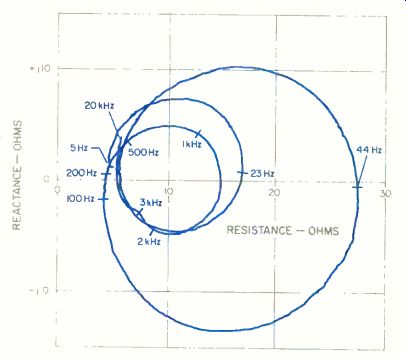
Fig. 2--Complex impedance for " Normal" switch setting.
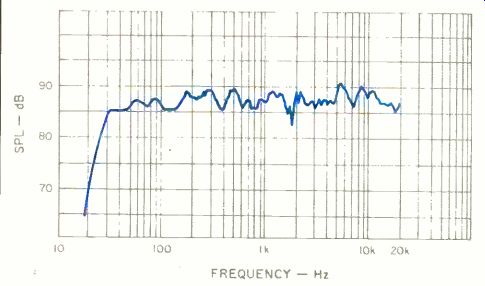
Fig. 3--One-meter on-axis drive corresponding to sound pressure amplitude
1 average watt into 8 ohms, for a constant-voltage
The three-meter room test, Fig. 5, shows severe irregularities in response below 1 kHz. In this test the 210 is placed on a rug-covered floor and the frequency spectrum is measured for the first 11 mS of sound which arrives at the listening location. The listening location is three meters from the front of the enclosure and one meter above the floor, at the normal position that would be occupied by the head of a seated listener. The irregularities in early sound response are due to the interference between the direct sound and shallow-angle floor reflections. The reason for this is the very low position of the bass driver, coupled with the system's broad vertical dispersion pattern; this combination allows a strong, grazing sound incidence between floor and listener.
The difference in time delay between these two arrivals is about 1.18 mS, which gives a comb-filter response that is periodic at 850-Hz frequency intervals. I recommend raising the Genesis 210 at least a half meter above the floor, if this is possible. Because of the vertical polar pattern of the tweeter, the maximum height of such a raised configuration should not be greater than that which places the center of the loudspeaker at listening level.
Horizontal and vertical polar-energy responses are plot ted in Figs. 6 and 7, respectively. As in the three-meter room test, the "Left" speaker was used for the polar response measurements. I assumed, since no instructions were sup plied by Genesis on this, that the "Left" speaker is to be placed so as to reproduce the left channel of stereophonic sound, that is, toward one's left as he faces the center of the stereo speaker configuration. That is how I listened to the system prior to doing the laboratory tests. The horizontal response shows that this speaker gives a more uniform dispersion if used as a right channel reproducer. It is not much of a difference when seated more than 30° off axis, but has an effect within 20° of frontal position. Better stereo lateralization would occur if the speakers were either rotated inward toward the listening position or were swapped left for right. I recommend rotation toward the listening position.
Vertical dispersion is quite good above the front axis, and there are no signs of hot spots or beaming in the Genesis 210. The broad horizontal and vertical dispersion shows that these speakers should be placed away from large objects, either beside them or above them, in order to minimize the chance of strong early reflection coming back into the principal listening area. Stereo imaging should be excellent, according to these measurements, if these precautions are taken.
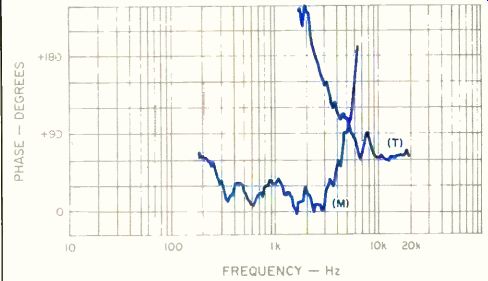
Fig. 4-One-meter on-axis anechoic phase response corrected for midrange time
delay of 3.2747 mS (M) and tweeter time delay of 3.0663 mS (T).
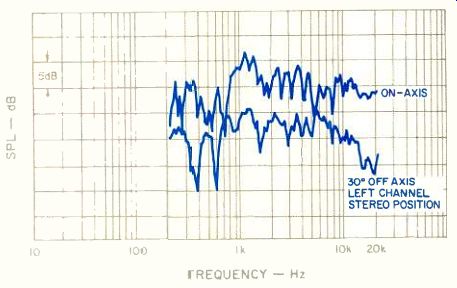
Fig. 5-Three-meter room test plots separated 10 dB for clarity.
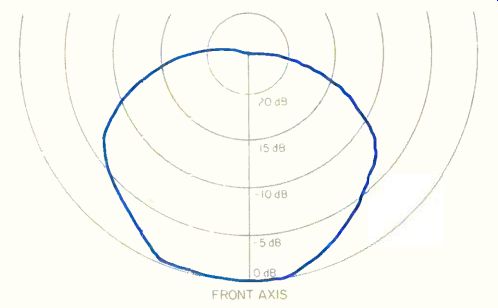
Fig. 6-Horizontal polar-energy response.
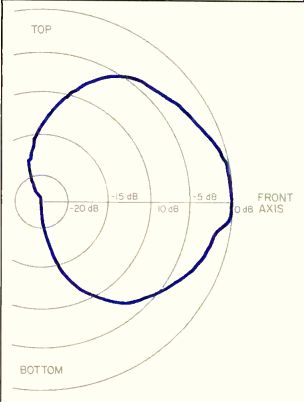
Fig. 7-Vertical polar-energy response.
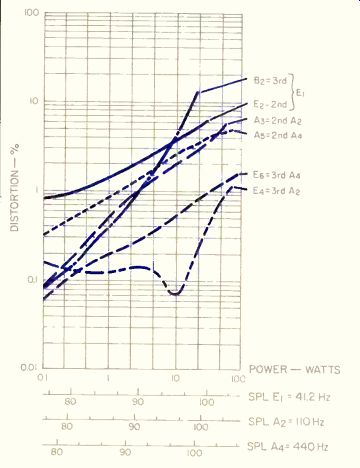
Fig. 8-Harmonic distortion for the tones E1 (41.2 Hz), A2 (110 Hz) and A4
(440 Hz).
Harmonic distortion for the tones of E1, A2 and A4 is shown in Fig. 8. Third-harmonic distortion for A2 and A4 remains low up to the highest test limits, but second-harmonic distortion levels are a bit higher than I would have expected for a system of this high quality. And, although low E lies within the power-handling range of the Genesis, severe acoustic distress becomes evident at 20 average watts.
Intermodulation distortion on A1, caused by simultaneous application of low E at the same drive level, is plotted in Fig. 9. At low levels the distortion on A4 is principally phase modulation. As power is raised, this gradually is augmented by amplitude modulation until, at 10 average watts, A4 has a 10° peak-to-peak phase modulation combined with a 10% peak-to-peak amplitude modulation due to the lower tone. In addition, there is a small average displacement of the sound source toward the listening position, which amounts to a time shift of 35 1AS or about 1 centimeter image shift. At 25 average watts the tone of A4 has a 15° phase modulation and 20% amplitude modulation, both peak to peak. On the whole, the IM is moderately high, indicating a tendency toward acoustic-image smearing at high bass drive levels.
The Genesis 210 handily passed both the crescendo and the acoustic transfer gain tests. In the crescendo test, a tone burst, smothered by a suddenly applied noise of 20-dB higher average level in a 20-kHz band, suffered less than 0.1-dB change for Middle C and less than 0.2-dB change for a tone of A4. Both of these tests were conducted for peak power levels of signal plus noise up to 300 watts (assuming the speaker were of 8-ohms impedance). In the acoustic transfer gain test, the ratio of sound pressure to applied voltage remained within 0.05 dB of ideal from 100 mW to 10 watts for the tones of Middle C, A2, and A4. A2 and A4 were able to maintain this linearity up to 60 average watts, while Middle C dropped by 0.5 dB at this level.
On the whole, the harmonic, IM, crescendo, and gain tests indicate that the Genesis should be able to handle complicated dynamics of solo instruments as well as orchestral passages without blurring of the stereo illusion or instrumental wander. However, hard-driving bass can cause a muddiness and orchestral smearing at very high levels.
The energy-time curve is plotted in Fig. 10. The first arrival, at 3.07 mS, is due to the tweeter. The second arrival, commencing at 3.2 mS, is principally due to the lower frequency driver, although some irregularities exist because of sound scattering from the grille assembly. Transient response is principally complete within the first millisecond.
Although the transient response could be improved, for this one-meter axial measuring position, by delaying the tweeter sound relative to the woofer by about 0.2 mS, the overall response of the present system is moderately good, in my opinion.
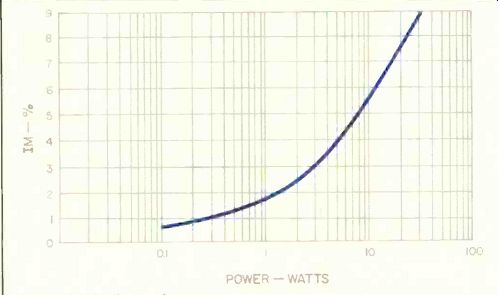
Fig. 9-1M distortion on A4 (440 Hz) caused by E1 (41.2 Hz), mixed one-to-one.
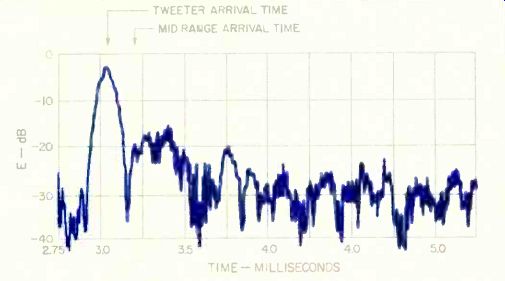
Fig. 10-One-meter on-axis energy-time response.
Use and Listening Tests
In the listening test the loudspeakers were placed against a draped wall and on a rug-covered floor. The speaker marked "Left" was paced on my left, as I faced the system, with the "Right" speaker to my right. I experimented with several positions, including pulling the speakers away from the wall and rotating them relative to my listening location.
The best response, to my ears, was obtained when the speakers were backed almost against the wall and rotated toward my listening position. The tweeter switch had, to my ears, a minor influence on sound quality, and I conducted most of the tests with the rear-mounted tweeter switch in its Normal position.
The bass response of the Genesis 210 is very strong, too strong for fully accurate spectral balance in my opinion. I found that the tendency toward bottom dominance could be minimized by using a modest amount of bass-cut equalization on the program material. I was frankly surprised to see the results of the anechoic frequency response measurement later, since the listening performance seemed to have quite a bit more low- and mid-bass than the measured free-field response indicates. I was never completely satisfied with the spectral balance I obtained from the 210s. Piano has a coloration which, in my opinion, exhibits a nasal quality. This property was shared by all material, but was most prominent on piano.
The stereo illusion of the 210s has reasonable localization of solo instruments, but tends toward a central clustering of stereo material. This is strictly my own personal opinion and may not be shared by others, but recorded material that normally, to me, gives the illusion of a broad lateral spread, tends to shrink toward stage center. This was verified by A B comparison on the same material with a speaker system which 1 had previously tested.
Female and male vocal material is reasonably accurate, but the bass response must be pulled down a bit to prevent "chestiness" in male vocals. Extreme highs and deep bass are well reproduced and certain types of wide range material, such as synthesizer, come alive on the 210.
-Richard C. Heyser
[based on review from Audio magazine, Sept. 1983]
Also see:
Genesis V Speaker (Auricle, Feb. 1997)
============